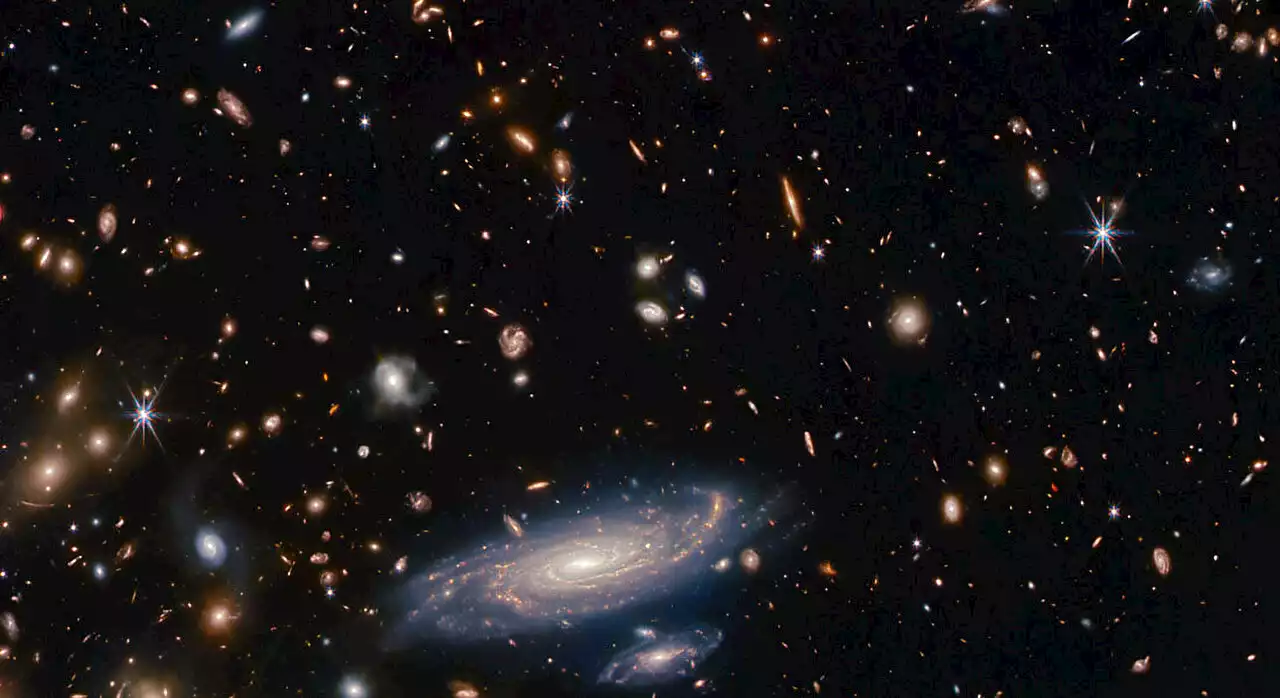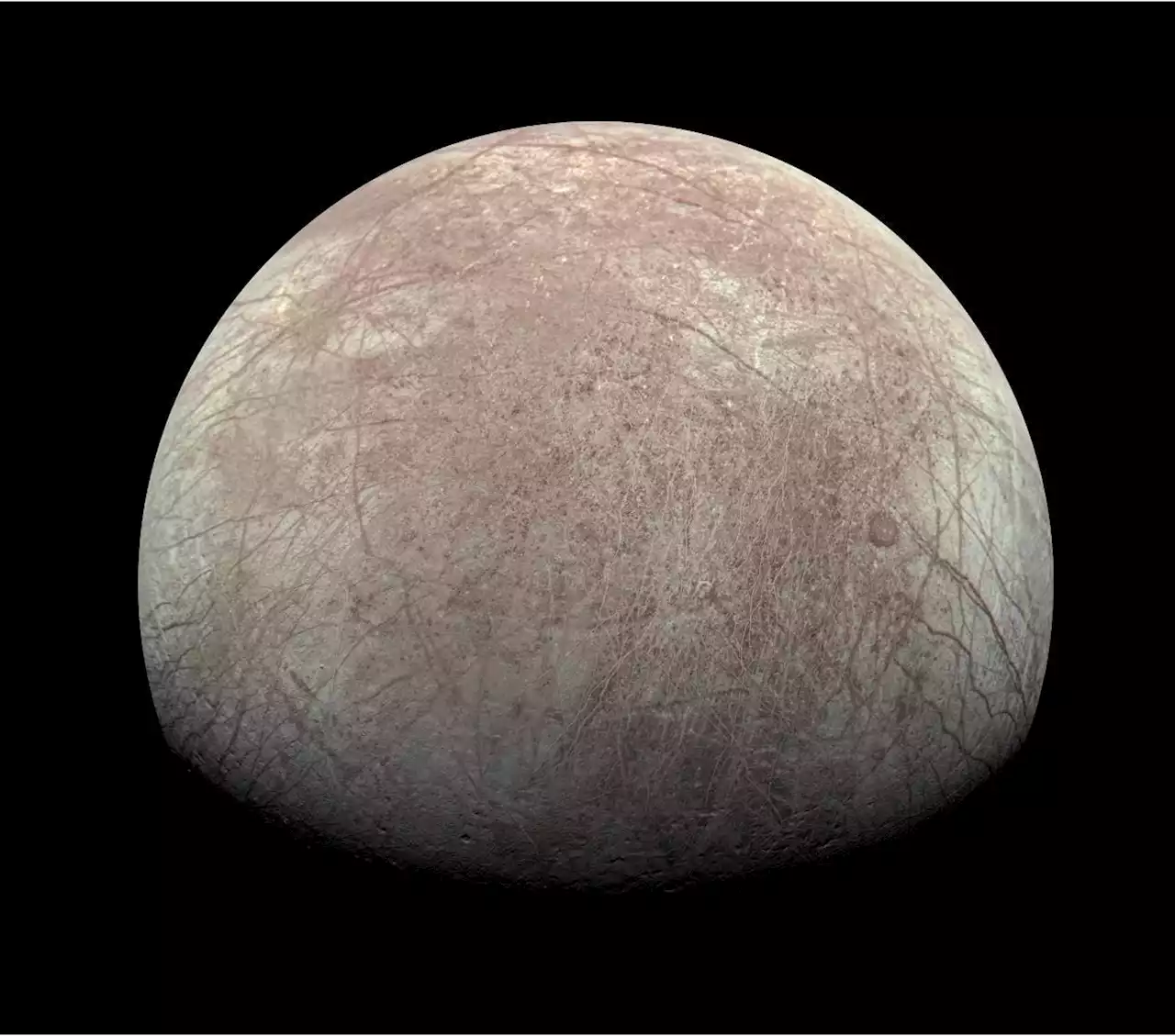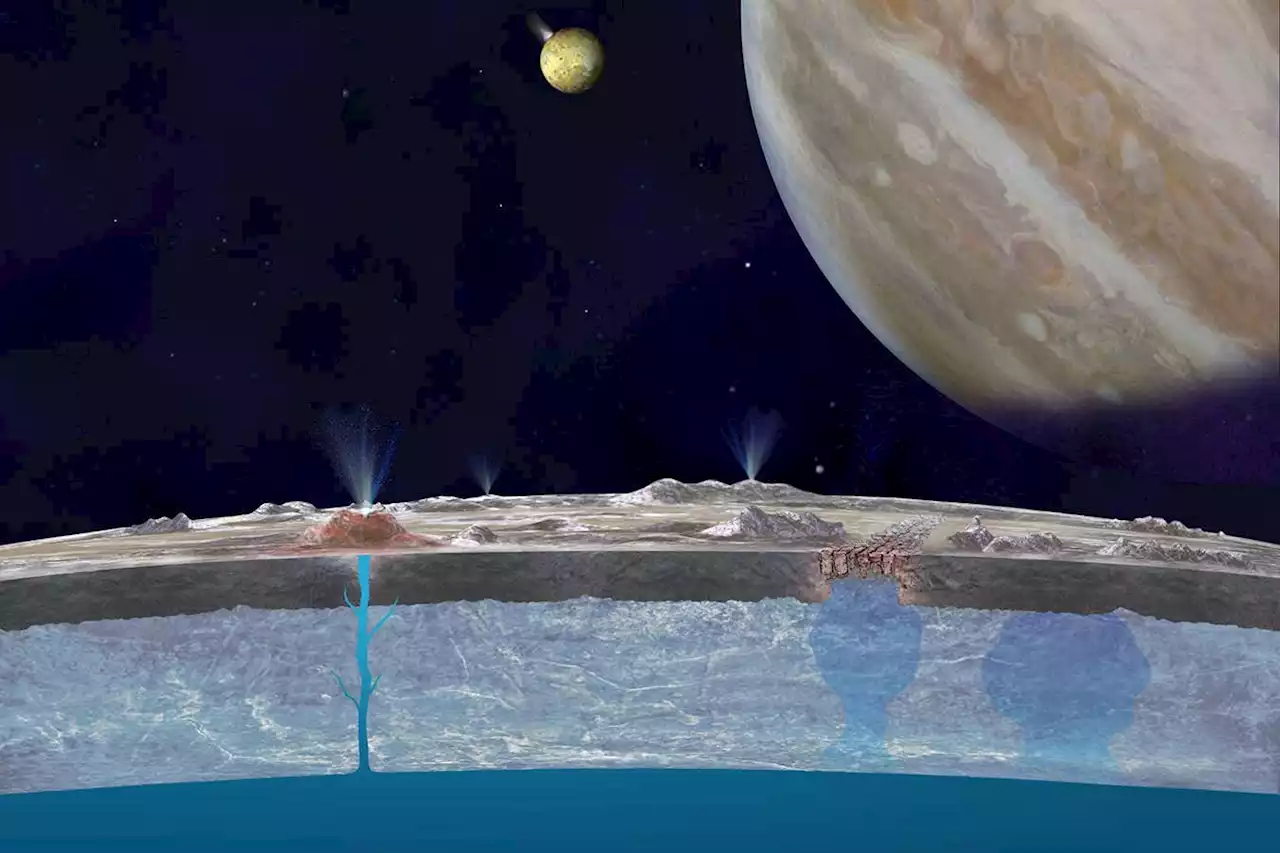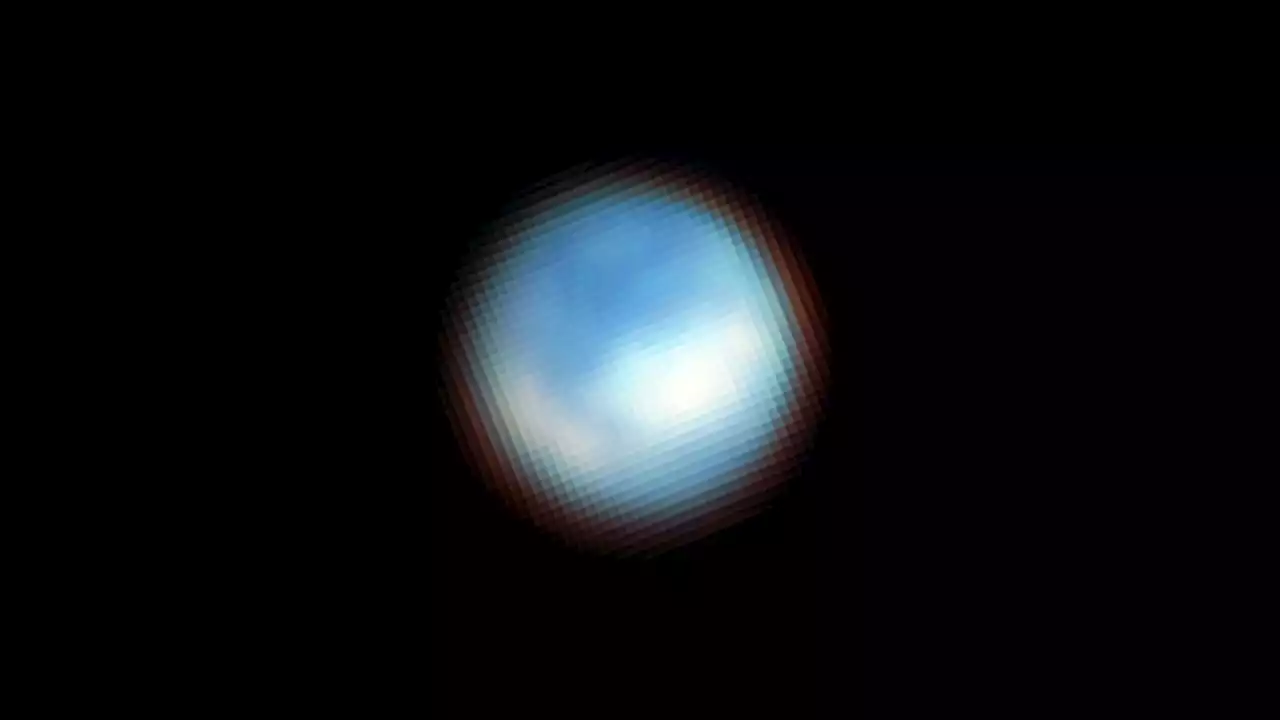The discovery made using NASA's powerful space telescope brings scientists a step closer to determining if the salty water oceans of Europa could support life.
, is most abundant in a geologically young region called Tara Regio. Surface ice has been disrupted at this so-called"chaos terrain" area, indicating that material has been exchanged between Europa's icy surface and its subsurface ocean.
This graphic shows a map of Europa's surface with NIRCam in the first panel and compositional maps derived from NIRSpec/IFU data in the following three panels. In the compositional maps, the white pixels correspond to carbon dioxide in the large-scale region of disrupted chaos terrain known as Tara Regio , with additional concentrations within portions of the chaos region Powys Regio .
United States Latest News, United States Headlines
Similar News:You can also read news stories similar to this one that we have collected from other news sources.
 James Webb Space Telescope and ALMA capture the core of the most distant galaxy protoclusterThe study of how individual stars are born and die in galaxies, how new stars are born from remnants of old stars, and how galaxies themselves grow are important themes in astronomy, as they provide insight into our roots in the universe. Galaxy clusters, one of the largest structures in the universe, are the assembly of more than 100 galaxies which are bound together through mutual gravitational force.
James Webb Space Telescope and ALMA capture the core of the most distant galaxy protoclusterThe study of how individual stars are born and die in galaxies, how new stars are born from remnants of old stars, and how galaxies themselves grow are important themes in astronomy, as they provide insight into our roots in the universe. Galaxy clusters, one of the largest structures in the universe, are the assembly of more than 100 galaxies which are bound together through mutual gravitational force.
Read more »
 Astronomers discover newborn galaxies with the James Webb Space TelescopeWith the launch of the James Webb Space Telescope, astronomers are now able to peer so far back in time that we are approaching the epoch where we think that the first galaxies were created. Throughout most of the history of the universe, galaxies seemingly tend to follow a tight relation between how many stars they have formed, and how many heavy elements they have formed.
Astronomers discover newborn galaxies with the James Webb Space TelescopeWith the launch of the James Webb Space Telescope, astronomers are now able to peer so far back in time that we are approaching the epoch where we think that the first galaxies were created. Throughout most of the history of the universe, galaxies seemingly tend to follow a tight relation between how many stars they have formed, and how many heavy elements they have formed.
Read more »
 Webb Telescope: Ice On Jupiter’s ‘Wet Moon’ Europa Comes From A Hidden OceanData from the James Webb Space Telescope suggest that CO2 ice on Jupiter’s moon Europa is coming from its underground ocean—where extraterrestrial life could exist in theory.
Webb Telescope: Ice On Jupiter’s ‘Wet Moon’ Europa Comes From A Hidden OceanData from the James Webb Space Telescope suggest that CO2 ice on Jupiter’s moon Europa is coming from its underground ocean—where extraterrestrial life could exist in theory.
Read more »
 James Webb Telescope finds key ingredient for life in Jupiter's moon oceanEuropa is thought to have a hidden subsurface ocean of salty liquid water, which scientists believe may harbor the conditions suitable for life.
James Webb Telescope finds key ingredient for life in Jupiter's moon oceanEuropa is thought to have a hidden subsurface ocean of salty liquid water, which scientists believe may harbor the conditions suitable for life.
Read more »
 Europa’s underground ocean seems to have the carbon necessary for lifeObservations from the James Webb Space Telescope have shown carbon dioxide on the surface of Jupiter’s icy moon Europa – that’s a good sign for the habitability of its buried seas
Europa’s underground ocean seems to have the carbon necessary for lifeObservations from the James Webb Space Telescope have shown carbon dioxide on the surface of Jupiter’s icy moon Europa – that’s a good sign for the habitability of its buried seas
Read more »
